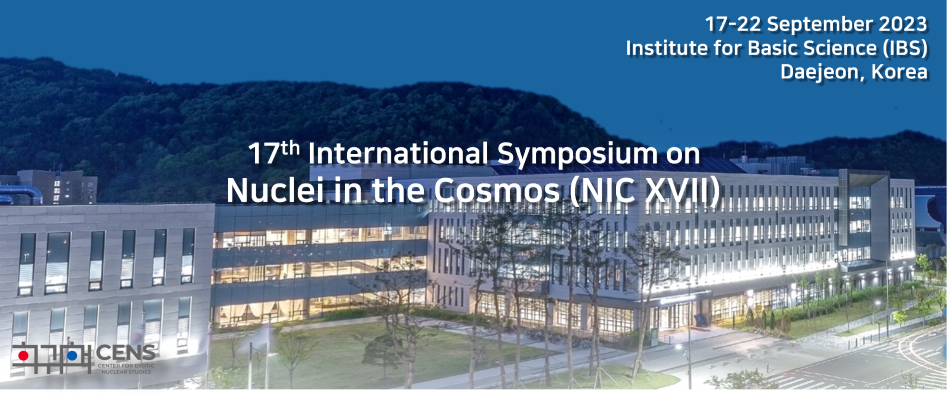Speaker
Description
Developments of the rare beam acceleration have opened new opportunities for study of mirror resonance reactions. Namely, comparison of the results of the mirror resonance reactions gives the opportunity to understand nuclear structure deeper.
$\quad$ Understanding the nuclear structure of $^{19}F$ and $^{19}Ne$ is crucial in comprehending the clustering structure around mass $A=20$. Previously, experiment with $\alpha+^{15}N$ scattering was conducted only by Smotrich et al. [1] in 1960, covering broad angles and energy range. But the analysis of excitation functions with several channels and overlapping resonances has not been performed [1].
$\quad$ We present the results of R-matrix analysis on Smotrich data [1] and our recent data on $\alpha+^{15}N$ resonant interaction obtained by the Thick Target Inverse Kinematics (TTIK) [2,3] method at DC-60 cyclotron in Astana. New R-matrix parameters were obtained from analysis of $^{19}F$ and then used to fit the mirror 19Ne spectrum from [4] in the same energy range. R-matrix analysis of the excitation function for the mirror $\alpha+^{15}O$ elastic scattering was done based on new results for $^{19}F$ [5,6]; both experiments were performed using the TTIK method.
$\quad$ TTIK approach for data acquisition in mirror nuclear reactions allows to obtain new spectroscopic information.
References:
[1] H. Smotrich, K. W. Jones, L. C. McDermott, and R. E. Benenson, Elastic scattering of $\alpha$ particles by $^{15}N$, Phys. Rev. 122, 232 (1961).
[2] K. Artemov, O. Belyanin, A. Vetoshkin, Effective method of investigation of $\alpha$-cluster states, Soviet Journal of Nuclear Physics ,Ussr 52, 408, 634–639, (1990).
[3] A. K. Nurmukhanbetova, V. Z. Goldberg, D. K. Nauruzbayev, G. V. Rogachev, M. S. Golovkov, N. A. Mynbayev, S. Artemov, A. Karakhodjaev, K. Kuterbekov, A. Rakhymzhanov, Z. Berdibek, I. Ivanov, A. Tikhonov, V.I. Zherebchevsky, S. Y. Torilov, and R. E. Tribble, Implementation of TTIK method and time of flight for resonance reaction studies at heavy ion accelerator DC-60,NIM A 847, 125, (2017).
[4] D. Torresi, C. Wheldon Tz. Kokalova, S. Bailey, A. Boiano, C. Boiano, M. Fisichella, M. Mazzocco, C. Parascandolo, D. Pierroutsakou, E. Strano, M. Zadro, M. Cavallaro, S. Cherubini, N. Curtis, A. Di Pietro, J. P. Fernandez-Garcia, P. Figuera, T. Glodariu, J. Grebosz, M. La Cognata, M. La Commara, M. Lattuada, D. Mengoni et al., Evidence for $^{15}O+\alpha$ resonance structures in $^{19}Ne$ via direct measurement, Phys. Rev. C 96, 044317 (2017)
[5] Goldberg, V.Z., Nurmukhanbetova, A.K., Volya, A.,Serikbayeva, G.E., Rogachev, G.V. $\alpha$-cluster structure in $^{19}F$ and $^{19}Ne$ in resonant scattering. Physical Review C, 2022, 105(1), 014615
[6] Volya, A., Goldberg, V.Z., Nurmukhanbetova, A.K., Nauruzbayev, D.K., Rogachev, G.V. Lowest-energy broad $\alpha$-cluster resonances in $^{19}F$,Physical Review C, 2022, 105(1), 014614

